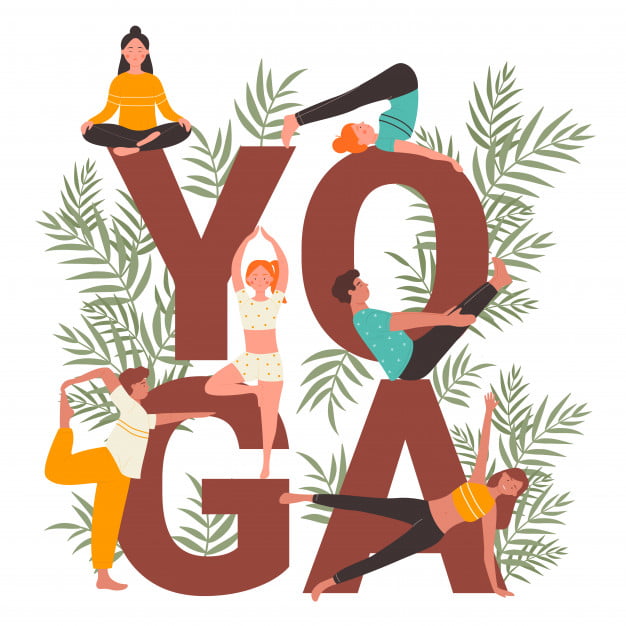Someone who practices yoga is usually called a yogi.
Yogi is a name that refers to a master practitioner of yoga, or in another word, yoga instructor. In classical Sanskrit literature, yogi specifically refers to male yoga disciples with the female connotation being yogini. Yogis are practitioners of asanas and pranayama (breath control). They are characterized by their enlightened attitude and their quality of Self-awareness.
Yogi is the revered title bestowed upon individuals who live inspirational lives and are masters in the practice of yoga. In the Hindu tradition, yogis and yoginis are yoga disciples who have reached “the highest state of meditation,” or samadhi.
Yogis are distinguished from others by the qualities present in their day-to-day lives. These qualities are referred to in the sacred Hindu text, the “Bhagavad Gita,” or the “song of the blessed one,” which is a dialogue between the human, Arjuna, and the god, Krishna. When Arjuna asks Krishna how he can achieve salvation, Krishna responds to him by prescribing the qualities found in a yogi. These qualities include a forgiving heart, compassion for others, and devotion to the practice of yoga.
Simply put, a yogi is someone who is committed to the practice of yoga. So, if you’ve done a few downward-facing dogs in your lifetime, does that make you a yogi? Um, probably not. While this standard definition of a yogi* is commonly stated, it is too simple to adequately define what a yogi is and isn’t. Most importantly, we need to further define what we mean by the words “practice,” “commitment,” and “yoga.”
Practice means that a yogi repeatedly performs yoga to acquire or maintain a level of proficiency. From my experience, I’ve found that it’s necessary to practice yoga a minimum of three times per week for about an hour. Doing less than that will still certainly be very beneficial but probably not enough to make as much progress and improvement. Practice also infers a long-term commitment to the path of yoga. Usually, but not always, you are a yogi for life.
The yoga that is practiced in the West is usually only asana (physical postures) and a bit of pranayama (breathing techniques). However, this is just a sliver of what is practiced and considered yoga in India. Traditionally, a yogi would be approaching yoga in a broader context than just asana and pranayama, incorporating meditation, mudra, mantra, tapas, yogic philosophy, bhakti (devotional) yoga, karma yoga (selfless service), and ethical guidelines (yamas and niyamas).
The Eight Stages of a Yogi
The frequency, intention, and depth that you practice yoga depend on where you land in the four ashramas system of practice. The ancient yogis understood that not everyone can be hermits or renunciates practicing yoga 24/7 and that there are benefits to practicing yoga at different levels and stages of life. The ashramas system has four levels of practitioners: brahmacharya (young student), grihastha (householder), vanaprastha (hermit), and sannyasa (renunciate/monk). Most of us fall into the grihastha level – living a regular life in a house or apartment, with a steady job, relationships, family, etc.
Additionally, the Yoga-Bhashya, the oldest known commentary on the Yoga Sutras, gives a similar but different four classifications of yogis: Prathama-Kalika (beginner), Madhu-Bhumika (in the “honeyed level”), prajna-Jyotish (illuminated/advanced practitioner) and, atikranta-bhavaniya (transcended). Most practitioners in the West fall into the beginner or intermediate “honeyed” level.
If you combine these two systems of yogi classification, then you can create an interesting matrix to plot your current level and plan where you’d like to move towards in your practice. Once you find where you are at on the matrix, then it is easy to see in what two directions to move towards advancement and deepening your practice. While it is essential to embrace and accept your current level of practice, it is also helpful to set a long-term intention to move towards the next stage.
If you are near the boundaries between levels and stages, then you may find yourself creating a hybrid path of combining a bit of the deeper practices with an introspective lifestyle for an intermediate/advanced householder/hermit practice. In these modern times, we are also fortunate to be able to experience the hermit stage and advanced levels by taking yoga holidays or yoga retreats without a long-term commitment.
Where do you land in the yogi matrix? What yoga techniques are you planning to practice to move to the next level?

The Universal Qualities of a Yogi
While you don’t have to look like anything in particular or act a specific way, there are several universal qualities of a yogi. In the Bhagavad Gita, Krishna tells Arjuna what is required to become a yogi, “Fearlessness, purity of heart, perseverance in acquiring wisdom and in practicing yoga.” He goes on to describe the traditional ethical and moral rules of yoga, the yamas, and niyamas. In essence, a yogi strives to be the best human possible and to embody the virtues of kindness, truthfulness, compassion, and patience towards others.
A true yogi will practice in a clear, focused, step-by-step procedure. A yogi strives to examine, refine, and control the body, mind, and heart so that the soul becomes liberated. A yogi will have a sincere quest for knowing the true self and evolving to one’s fullest potential.
The Lifestyle of a Yogi
A yogi consciously works on shaping his or her attitudes, habits, and general ways of life to be more congruent with the philosophies, principles, morals, and ethics of yoga. Yogis make lifestyle choices that bring them towards a place of sattva, a state of equanimity and inner peace. Another important quality in a yogi’s lifestyle is the attainment of balance and harmony. Yogis are usually vegetarian and get 8 hours of sleep. The lifestyle of a yogi can seem very boring, but the lack of drama, stress, and anxiety are very conducive to progressing along the path of yoga.
How does one become a yogi?
If you find yourself drawn toward the practice of yoga and wish to become a yogi, follow these basic steps.
- Practice yoga often. Integrate the practice of yoga into your life and practice yoga and meditation at least three times per week.
- Find a good teacher. Working with a knowledgeable and qualified yoga teacher will give your practice consistency and depth. Establishing a relationship with a yoga instructor will also give you a resource for inspiration and guidance.
- Commit to deepening your practice. The breadth and depth of the practice and philosophy of yoga are great. Dedicate yourself to explore the deeper practices of yoga and to understand yogic philosophy through watching videos, reading books, and taking workshops.
- Embrace the Yamas and Niyamas. Take a vow to incorporate the yogic values and ethics as much as possible in your daily life. It’s not advised to practice all at once, just work consistently to explore and practice each one at a time.
- Make positive lifestyle choices. Examine your lifestyle choices and work to align them towards a lifestyle of peace, contentment, devotion, and balance.
The term yogi can be used as both feminine and masculine, and yogi is also synonymous with yogin.
CLICK HERE For More Course Inclusions and Our June Main Event![]()



















































